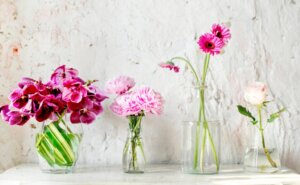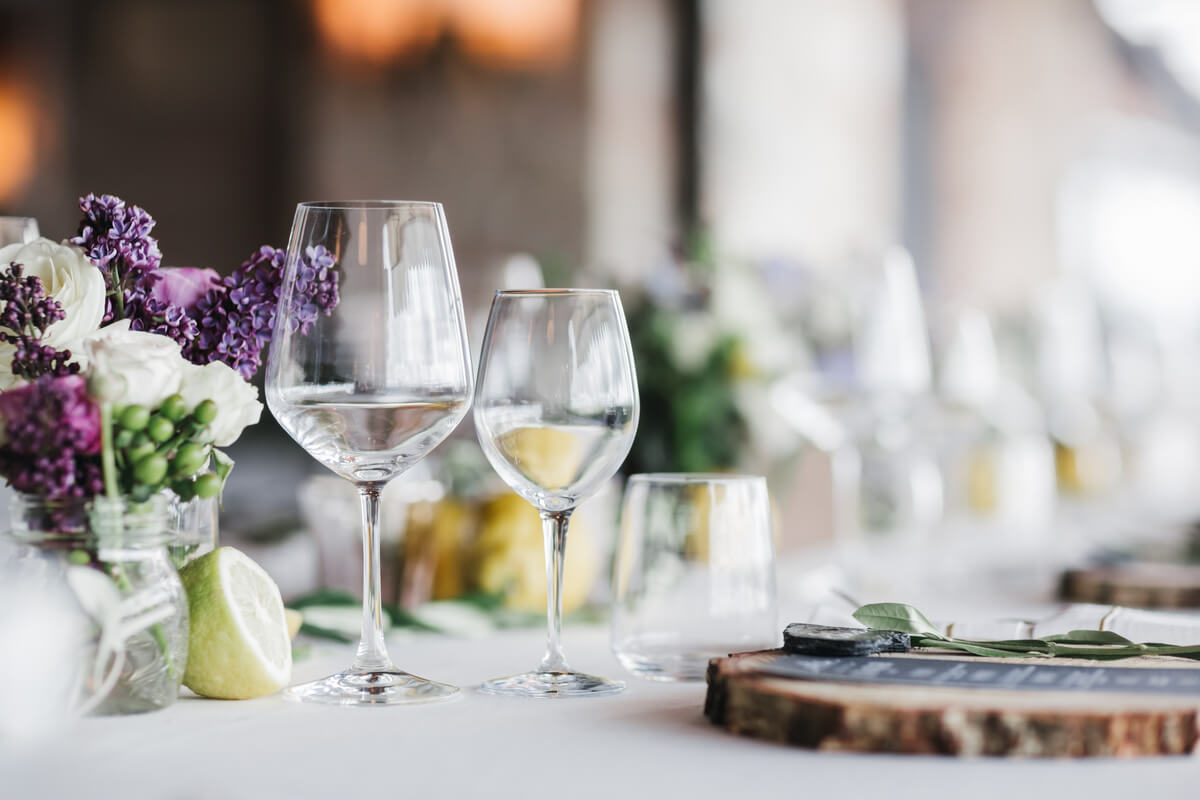Decorative Elements that Produce a Feeling of Lightness

The perception we feel every time we enter a room can be varied. It all depends on the resources that are used. For example, the decorative elements that produce a feeling of lightness.
On more than one occasion, you’re sure to have felt that a piece of furniture or an object doesn’t weigh much simply because of its appearance; in other words, it gives the impression of being light or small. The sensation doesn’t have to do with the literal size of the object. Rather, it’s a matter of content.
We tend to use resources that aim to offer a defined meaning. We’re referring, precisely, to all those that are meant to establish content, obtaining as a result the appropriate combination and relationship with the whole.
Materials that generate a sensation of lightness

Obviously, it’ll be the material that determines this sensation. Today, there are many possibilities to manufacture products that are easy to use on a daily basis and contribute positively both aesthetically and functionally.
A particular case is glass. We not only find it in the windows but also in different objects that contribute to the decoration. It’s usually transparent or semi-transparent and produces a pleasant and light visual effect.
In the same way, plastics, PVC, or polymers are a good bet on a decorative level; in fact, they’re having a growing presence in homes, just like ceramics and porcelain which, due to their delicate nature, convey that perception of lightness.
It’s in the material itself where the soul of things is found.
Resources that convey a feeling of lightness
Once we know some of the materials, it’s time to shape them and place them in the home as decorative resources. All of them contribute, in one way or another, to the construction of an internal discourse. So, let’s look at some examples:
- Crystal glasses, jugs, and bowls are the main examples that take the lead in this type of aesthetic. They’re characterized by a level of transparency that purifies the environment and offers a much more volatile and subtle content, as occurs, for example, with Bohemian glass.
- Another case is that of Tiffany lamps, which are made up of small pieces of colored glass that slightly filter light and produce a calm and dynamic atmosphere.
- Transparent plastic seats, such as chairs and stools, are gaining more and more presence in hospitality spaces. They barely weigh anything and fulfill exactly the same function as those made of metal or wood.
- Translucent silk curtains are also among the most common. They’re used for those spaces in which we want more light to enter. In this case, they enrich the room and don’t become an impediment to the entry of natural light.
- Transparent side tables, made of glass or plastic, also fit into this group. They’re not that common; however, glass tops for center tables in the living room or dining room predominate to a greater extent.
Household items are also included

Don’t forget that household items also contribute to decoration. Although they serve a utilitarian and functional purpose, they can also play an important role on an aesthetic level.
Glasses, plates, goblets, platters, bowls, and vases take on an interesting role. It should be noted that, on a general level, they can offer a distinguished, elegant, and pure image, and thus break with the schemes to which we’re accustomed.
If you want to throw an original celebration, you have the opportunity to apply a type of tableware that can even surprise thanks to glassware, something we’re not used to.
You have to surprise your guests with original resources.
Glass floors: An innovative structure
One of the trends that’s gaining great popularity in public spaces is glass floors. They’re useful to expose the lower part of the floor, as they are often used to display archaeological remains at museums.
Instead of establishing traditional opaque floors, why not innovate and apply an alternative that contributes to the same function in an original way? At home, it has a lot to say and can make your home stand out in a sophisticated way.
The perception we feel every time we enter a room can be varied. It all depends on the resources that are used. For example, the decorative elements that produce a feeling of lightness.
On more than one occasion, you’re sure to have felt that a piece of furniture or an object doesn’t weigh much simply because of its appearance; in other words, it gives the impression of being light or small. The sensation doesn’t have to do with the literal size of the object. Rather, it’s a matter of content.
We tend to use resources that aim to offer a defined meaning. We’re referring, precisely, to all those that are meant to establish content, obtaining as a result the appropriate combination and relationship with the whole.
Materials that generate a sensation of lightness

Obviously, it’ll be the material that determines this sensation. Today, there are many possibilities to manufacture products that are easy to use on a daily basis and contribute positively both aesthetically and functionally.
A particular case is glass. We not only find it in the windows but also in different objects that contribute to the decoration. It’s usually transparent or semi-transparent and produces a pleasant and light visual effect.
In the same way, plastics, PVC, or polymers are a good bet on a decorative level; in fact, they’re having a growing presence in homes, just like ceramics and porcelain which, due to their delicate nature, convey that perception of lightness.
It’s in the material itself where the soul of things is found.
Resources that convey a feeling of lightness
Once we know some of the materials, it’s time to shape them and place them in the home as decorative resources. All of them contribute, in one way or another, to the construction of an internal discourse. So, let’s look at some examples:
- Crystal glasses, jugs, and bowls are the main examples that take the lead in this type of aesthetic. They’re characterized by a level of transparency that purifies the environment and offers a much more volatile and subtle content, as occurs, for example, with Bohemian glass.
- Another case is that of Tiffany lamps, which are made up of small pieces of colored glass that slightly filter light and produce a calm and dynamic atmosphere.
- Transparent plastic seats, such as chairs and stools, are gaining more and more presence in hospitality spaces. They barely weigh anything and fulfill exactly the same function as those made of metal or wood.
- Translucent silk curtains are also among the most common. They’re used for those spaces in which we want more light to enter. In this case, they enrich the room and don’t become an impediment to the entry of natural light.
- Transparent side tables, made of glass or plastic, also fit into this group. They’re not that common; however, glass tops for center tables in the living room or dining room predominate to a greater extent.
Household items are also included

Don’t forget that household items also contribute to decoration. Although they serve a utilitarian and functional purpose, they can also play an important role on an aesthetic level.
Glasses, plates, goblets, platters, bowls, and vases take on an interesting role. It should be noted that, on a general level, they can offer a distinguished, elegant, and pure image, and thus break with the schemes to which we’re accustomed.
If you want to throw an original celebration, you have the opportunity to apply a type of tableware that can even surprise thanks to glassware, something we’re not used to.
You have to surprise your guests with original resources.
Glass floors: An innovative structure
One of the trends that’s gaining great popularity in public spaces is glass floors. They’re useful to expose the lower part of the floor, as they are often used to display archaeological remains at museums.
Instead of establishing traditional opaque floors, why not innovate and apply an alternative that contributes to the same function in an original way? At home, it has a lot to say and can make your home stand out in a sophisticated way.
All cited sources were thoroughly reviewed by our team to ensure their quality, reliability, currency, and validity. The bibliography of this article was considered reliable and of academic or scientific accuracy.
- Burg, Dale; Maryo Ellen, Pinkhan: La casa perfecta: consejos prácticos para el hogar, Random House, 2002.







